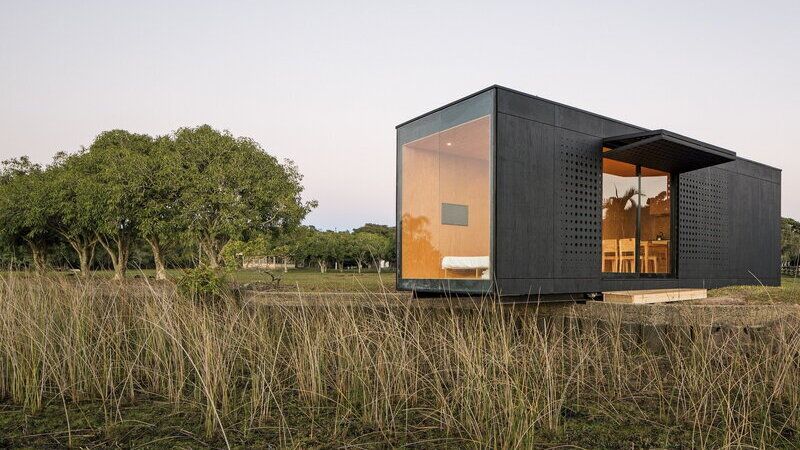
Prefab House: Definition and Advantages | Nasem Çelik
Prefab House: Definition and Advantages
A prefab house is a type of dwelling that is produced in factories and later transported to the construction site for assembly. The term "prefab" stands for "previously manufactured." These types of houses are typically characterized by the pre-cut and prepared components made of materials such as wood, steel, or concrete, which are manufactured in a factory and then assembled on-site.
The key features of prefab houses can include:
-
Modular Structure: Prefab houses are constructed by assembling various modules. These modules are produced in a factory, transported, and then assembled on-site.
-
Quick Construction: Prefab houses can be built faster than traditional construction because materials are prepared in advance, reducing on-site labor time.
-
Portability: Prefab houses can be moved if needed. Modules can be disassembled and relocated.
-
Design Versatility: Prefab houses offer a variety of design and style options, allowing for the construction of homes that match individual preferences.
-
Cost Efficiency: Prefab houses are often more cost-effective compared to traditional construction. The mass production of materials in a factory can lead to cost savings during the construction process.
-
Energy Efficiency: Prefab houses can be designed with energy efficiency and sustainability in mind. Effective insulation and energy-saving measures can be implemented.
Prefab houses are suitable for various applications, including emergency housing, vacation resorts, campus accommodations, temporary shelters, and more. They are also an option that promotes eco-friendly and sustainable construction practices. Prefab houses can be an attractive solution for those seeking quick and economical housing options.
What Factors Affect Prefab House Prices?
Prefab house prices can vary depending on several factors. Each prefab house project is unique, and there are many variables that influence costs. Here are the main factors that determine prefab house prices:
-
House Type and Size: The type (e.g., portable container house, modular house, panel house, etc.) and size of the house significantly affect the price. Larger houses generally come with higher costs.
-
Material Quality: The quality of materials used affects prefab house prices. Using high-quality wood, steel, or concrete materials can increase the cost.
-
Design and Customizations: The house's design, customizations, and extras can add to the cost. Custom design requests, special equipment, or upgrades for energy efficiency can impact the price.
-
Location and Assembly Costs: The location where the prefab house will be assembled, accessibility, and ground conditions can influence the cost. Assembly costs can increase in remote or challenging areas.
-
Energy Efficiency: Energy efficiency measures can impact the cost of the house. Higher energy efficiency requirements, such as insulation, climate control, and solar panels, can add extra expenses.
-
Local Construction Costs: The geographic location of the construction site, building permits, and local construction costs can affect prefab house prices.
-
Manufacturer and Supplier: The company manufacturing or supplying the prefab house influences the prices. Comparing prices from different manufacturers or suppliers is essential to find the best deal.
-
Extras and Interior Finishes: Additional features, appliances, and interior finishes can increase the overall cost of the house.
-
Transport and Assembly Costs: The transportation and assembly of the prefab house from the factory to the construction site can be costly and contribute to the total price.
Prefab house prices can vary significantly based on these factors, and each project is tailored to meet specific requirements. To get the best price, it's essential to obtain quotes from multiple manufacturers or suppliers.

